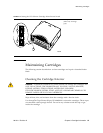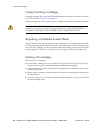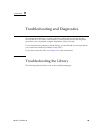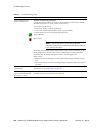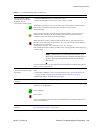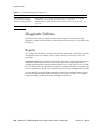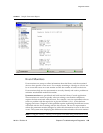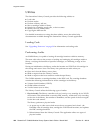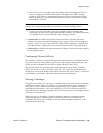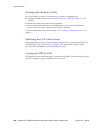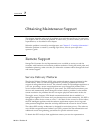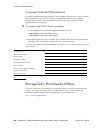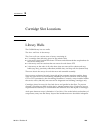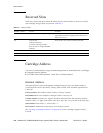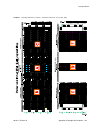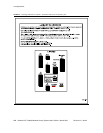
Diagnostic Utilities
96154 • Revision K Chapter 6 Troubleshooting and Diagnostics 105
■ Entire library audit. The robot visits all cartridge slots (including the CAPs and
drives), catalogs the VOLIDs and locations, and updates the HBC cartridge
database. This audit is a background process and so does not interrupt online
library operations. View the Cartridge Summary Report for the latest cartridge
locations and VOLIDs.
Note – The estimated time for a physical audit of an entire library is from less than 10
minutes for a 1,448 cartridge library to 45 minutes for 6,632 cartridge library.
■ Specific range audit. the robot visits only a specific range of cartridge slots
(including caps and drives) and updates the HBC database. The audit information
is displayed on the console while the audit is being performed.
2. Verified audit. Available through the StreamLine Library Console, this audit
validates the status of a specific cartridge slot (or range of slots). If a cartridge in a
slot has a status of “false,” the VOLID is audited and the database is updated. The
audit information is displayed on the console while the audit is being performed.
3. Virtual audit. Available through the StreamLine Library Console, this audit displays
the cartridge database.
Performing Library Self-test
The self-test is minimal functional test performed after the library is installed and also
at periodic intervals during library operations to help diagnose basic problems with
library and the associated devices (drives, robots, elevators, and CAPs).
The self-test checks the communication paths between the main library controller
(HBC) and all drives, robots, elevators, and CAPs. The utility also performs several
motion tests to check the health of the robots, elevators, and CAPs. Finally, a full audit
of the library is performed, followed by drive mounts and dismounts.
Moving Cartridges
Using the move utility, you can move a cartridge from one location (source) to another
(destination) within a library. Examples: (1) you might decide to group cartridges by
data type or to move them closer to their assigned drive. (2) to replace a cleaning
cartridge that has expired
—move the cartridge to a CAP slot and then perform an
eject; enter the new cleaning cartridges into a CAP slot and move the cartridge from the
CAP slot to a reserved slot.
Before moving any cartridge, it might be helpful to generate a cartridge summary
report that shows the contents of slots in the library. This report will help you
determine which slots are available for use and which cartridges might have to be
moved to obtain their slot.



